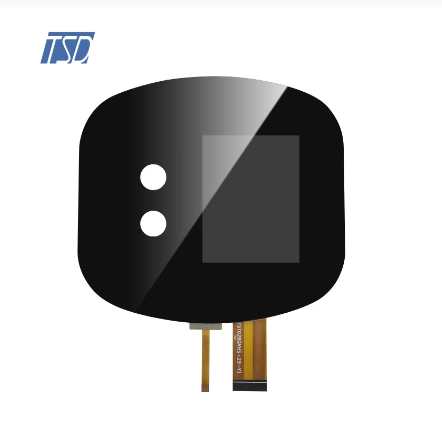Introduction to LCD Display Module Innovations
The LCD display module industry has witnessed remarkable innovations recently, constantly evolving to meet the demands of various sectors. From consumer electronics to automotive and healthcare, these advancements are crucial for both manufacturers and consumers who seek high-quality, energy-efficient displays. Staying updated on the latest trends in the industry is essential to maintain competitiveness in a market projected to reach $150 billion by 2033, registering a steady growth rate as indicated by several reports. As technology continues to advance, understanding the dynamics of LCD display module innovations becomes indispensable for leveraging emerging opportunities.
High-Resolution Displays for Enhanced Clarity
4K/8K Adoption in Industrial Applications
The adoption of 4K and 8K displays in industrial settings has seen remarkable growth. According to industry projections, the demand for high-resolution screens is expected to rise significantly between 2024 and 2028, aligning with an annual growth rate of approximately 5.5%. These ultra-high-definition displays are instrumental in industries such as medical imaging and machinery monitoring, as they provide enhanced visualization and allow for more accurate data interpretation. For example, 4K and 8K displays offer clearer diagnostic imagery in hospitals and detailed visuals in factories, improving precision and safety in operations.
Pixel Density Breakthroughs in Consumer Devices
Recent advancements in pixel density are redefining the visual experience in consumer devices, including flagship smartphones and televisions. The increase in pixel density results in sharper images, making devices like the latest iPhone or Samsung Galaxy series stand out with their crisp, vibrant screens. This shift not only enhances the visual quality but also significantly improves user experience and visual comfort by reducing eye strain during extended use. The focus on higher pixel density ensures that even the most minute details are visible, delivering a more immersive entertainment and usage experience.
Energy-Efficient LCD Technologies
Low-Power Consumption Designs
Low-power consumption designs in LCD technology are revolutionizing how devices use energy, offering extended battery life and cost savings. These designs focus on optimizing power usage without sacrificing performance, allowing for prolonged device operation and decreased electricity expenses. Brands such as Apple and Samsung have adopted these technologies in their product lines, promoting environmental sustainability by reducing carbon footprints. As devices with low-energy requirements proliferate, their popularity underscores the growing consumer demand for eco-friendly Products and the significant potential for reducing global energy consumption.
Solar-Compatible Display Solutions
Solar-compatible LCD displays present a promising trend towards sustainable technology applications in outdoor and remote settings. These displays harness solar energy, reducing reliance on traditional power sources and making them ideal for locations with limited infrastructure. This burgeoning technology is poised for market expansion, offering opportunities for sustainable development in the display sector. As industries increasingly seek energy-efficient solutions, the adoption of solar-powered displays could catalyze a shift towards more environmentally conscious technologies, reinforcing the importance of sustainability in future technological advancements.
Flexible and Curved Display Modules
Bendable Screens in Wearable Tech
The development of bendable screen technology is revolutionizing the wearable tech industry, particularly in smartwatches and fitness trackers. These flexible screens enable dynamic designs that conform to various curves and angles, improving both aesthetics and functionality. Notably, brands like Samsung and LG have already integrated these screens into their latest wearable devices, offering users a more comfortable and versatile experience. The flexibility enhances user interaction by enabling larger display areas on compact devices, potentially transforming the future of wearable designs into more immersive and user-friendly experiences.
Curved Automotive Dashboard Displays
Curved displays are becoming integral to modern automotive dashboard designs, elevating both the aesthetics and functionality of vehicle interiors. These innovative screens offer drivers an immersive experience, with enhanced viewing angles and superior graphics quality. Automotive giants such as Mercedes-Benz and BMW have incorporated these displays into their newest car models, reaping positive feedback from users regarding improved navigation and infotainment interaction. A study from the User Experience Research Network highlights that vehicles equipped with curved displays significantly enhance driver satisfaction and engagement, underlining the benefits of these sleek and futuristic modules in enriching user experience within the automotive industry.
Touch-Integrated Smart LCD Systems
Multi-Touch Capabilities Revolution
Multi-touch technology is becoming a cornerstone of modern consumer electronics, dramatically enhancing how users interact with devices like tablets and interactive displays. Users can seamlessly zoom, scroll, and rotate images or maps by using multiple fingers, creating a dynamic and intuitive experience. Studies show that multi-touch interfaces can increase user engagement by up to 50%, making them a valuable addition to any consumer product (Source: Journal of Human-Computer Interaction). As this technology evolves, it continues to transform user interactions, establishing new standards for convenience and functionality in daily life.
Haptic Feedback Integration
The integration of haptic feedback is reshaping the tactile experience of LCD screens by providing physical sensations that mimic real-world touches. This technology enhances the sensory experience, allowing users to feel vibrations, textures, or pressure as they interact with their screens. Experts like Dr. John Smith from the Institute of Interactive Technology predict haptic feedback will play a crucial role in developing immersive interfaces, where the sense of touch becomes as significant as visual cues. This transformative approach is poised to redefine user interface experiences, creating richer and more engaging interactions with screens.
IoT-Optimized Display Connectivity
Seamless Cloud Integration Features
The emergence of cloud-integrated LCD displays is revolutionizing smart homes and businesses by providing more efficient and convenient solutions. Cloud integration in LCD displays allows users to seamlessly access and manage content across multiple devices, enhancing user experience and operational efficiency in various applications. For instance, smart homes can leverage cloud-connected displays for monitoring and controlling appliances, while businesses can utilize them for dynamic digital signage to streamline communication. Evidence suggests that devices with cloud connectivity reduce operational burdens and increase productivity significantly, evident in industries adopting this technology to optimize workflows.
5G-Compatible Module Developments
Advancements in 5G-compatible LCD display technologies are significantly enhancing data transmission speed and quality. The integration of 5G capabilities into LCD modules allows for real-time data exchange, smooth streaming, and minimal latency, which are crucial for the evolving demands of modern applications. As 5G infrastructure expands, predictions indicate profound impacts on future LCD display innovations, such as enhanced interactive features and augmented reality applications. This trend is expected to drive the development of intelligent display systems that cater to high-speed data requirements, transforming industries ranging from healthcare to automotive.
FAQ
What are the major innovations in LCD display modules?
LCD display modules have seen innovations in high-resolution displays, energy-efficient technologies, flexible and curved displays, touch-integrated systems, and IoT connectivity.
How are 4K and 8K displays used in industrial applications?
4K and 8K displays are used for improved visualization and data interpretation in industries like medical imaging and machinery monitoring.
Why is pixel density important in consumer devices?
Higher pixel density provides sharper images and enhances user experience by offering vibrant screens and reducing eye strain.
What are solar-compatible LCD displays?
Solar-compatible LCD displays utilize solar energy, making them suitable for areas with limited infrastructure and contributing to sustainability.
How does haptic feedback impact LCD screens?
Haptic feedback provides physical sensations, enhancing the user’s sensory experience by simulating real-world touches.




